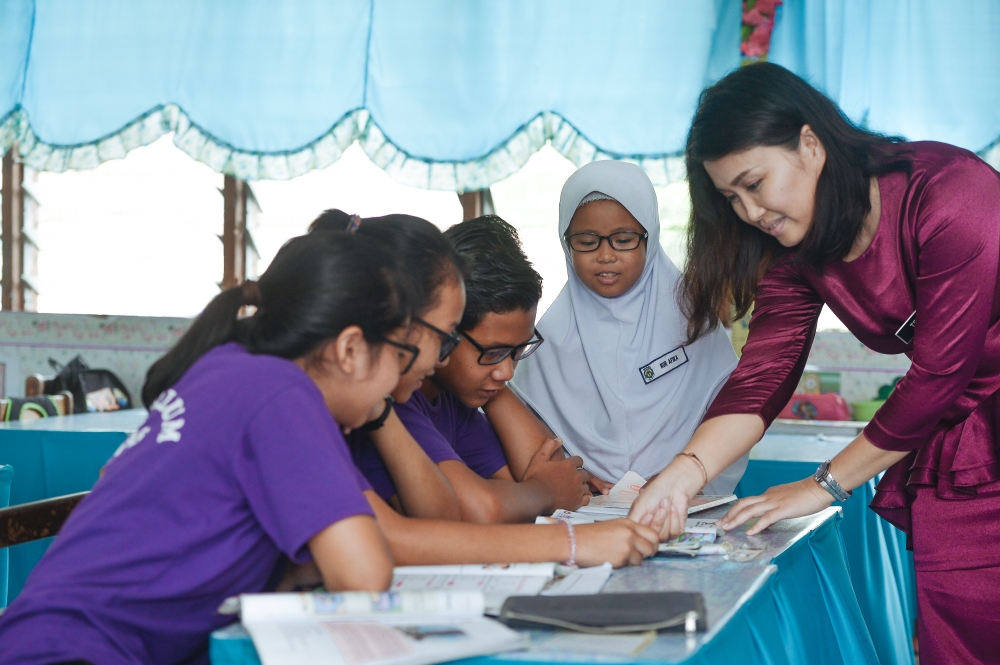Oct 26 —In a world that is becoming increasingly interconnected, learning new languages is no longer just a skill—it’s a bridge to understanding cultures, building relationships, and opening doors to opportunities.
In China, a country with over a billion people, an unexpected trend is emerging: a growing interest in learning the Malay language. But despite this surge in interest at universities, many students struggle to stay engaged.
This raises an important question: can we make learning Malay more engaging and practical for Chinese students?
As part of a team working on this challenge, we have developed a mobile app specifically designed to make Malay language learning more accessible and meaningful.
The app is focused on practical communication skills and aims to help students integrate Malay into their everyday lives. By using mobile technology, we hope to provide students with a tool that not only makes learning easier but also more relevant to their daily experiences.
The success of this initiative depends heavily on the collaboration between lecturers and students. Lecturers, who are traditionally seen as the primary source of knowledge, now have the opportunity to shift their roles and guide students through more interactive, technology-based learning experiences.
The app serves as a platform where lecturers can introduce language in new, creative ways, making the learning process more engaging for students.
This is particularly important for Chinese students who are navigating Malay as a foreign language and may benefit from more flexible and practical learning methods.
Of course, developing a tool like this comes with its own set of challenges. We had to carefully consider the app’s design, ensuring that it is user-friendly while also taking into account the specific cultural and educational needs of Chinese students.
To make the app as effective as possible, we are gathering feedback directly from students in China. Their insights on what features and functions they find most useful will be instrumental in shaping the app’s development.
By incorporating student feedback, we aim to create an app that not only teaches but also engages.
At the same time, our team has been working closely with experts in Malay language education to ensure that the content is both accurate and pedagogically sound.
By combining student input with expert guidance, we are confident that the app will offer a practical learning experience tailored to the needs of Chinese students.

Beyond just language learning, this project also offers an opportunity for cultural exchange.
As students in China become more proficient in Malay, they will have greater access to the rich cultural heritage of Southeast Asia. The Malay language is not just spoken in Malaysia but serves as a lingua franca in many parts of the region, including Indonesia, Brunei, Singapore, and southern Thailand.
By learning Malay, students can connect with the region’s diverse traditions, from the historic maritime trade routes that spread Islam and cultural practices, to the rich literary traditions of the pantun and syair in classical Malay literature.
They can explore the cultural significance of the Malay adat (customs) in traditional ceremonies, such as weddings and adat bersanding, or the art of storytelling in wayang kulit shadow puppetry, which has influenced Malay-speaking communities for centuries.
Additionally, gaining proficiency in Malay opens doors to appreciating Southeast Asia’s contemporary music, cinema, and visual arts, which often draw on the region’s shared history and diverse ethnic influences.
We hope that this deeper understanding of both the language and its cultural context will help to strengthen the relationship between China and the Malay-speaking world, fostering a sense of mutual respect and collaboration.
And as our project moves forward, we invite educators, students, and institutions to join us in exploring the potential of mobile technology in language learning.
By embracing new tools and methods, we can help create a more engaging and practical experience for those learning Malay.
Together, let’s continue to build bridges between cultures, one language learner at a time.
*The author is a lecturer at the College of Computing and Informatics, Universiti Tenaga Nasional (UNITEN). He may be reached at [email protected]
** This is the personal opinion of the writer or publication and does not necessarily represent the views of Malay Mail.





















